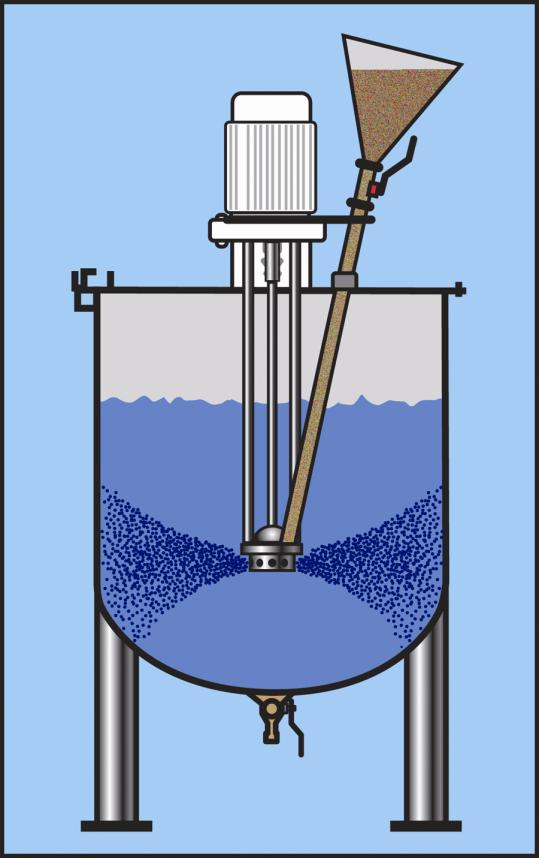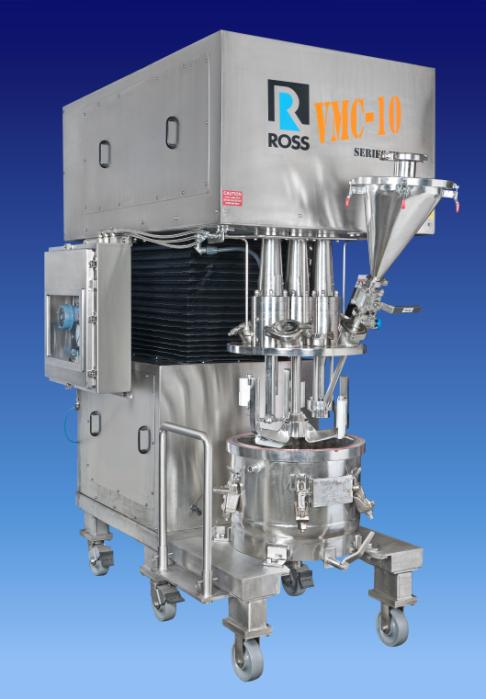Tech Report
Optimize powder injection in your batch mixer.

Technology Brief
Solids dispersion remains to be one of the most formidable processing challenges even today. A new high speed powder injection system described in this bulletin is ideal for dispersing hard-to-wet powders into liquid without agglomeration, floating or dusting.
Hard-to-wet powders
Powders like fumed silica, CMC, guar gum, carbon black, carrageenan, xanthan gum, talc, pectin, flours, clays, pigments, carbomers and other rheology modifiers pose a processing challenge in the mixing room. Especially in full-scale production, the dispersion of these powders into liquid is often difficult, time-consuming and costly. Charging these kinds of solids on top of the batch, even a well-agitated one, can still lead to floating powders or the formation of agglomerates and lumps if the addition is done too fast. It is quite common for operators to contend with either a long cycle time or less than ideal product quality due to inadequate mixing. In extreme cases, powders are intentionally overdosed and the undispersed agglomerates are simply filtered out.
Use of vacuum for powder injection
To deal with this issue in batch mixers, vacuum can be utilized to inject powders sub-surface. In conventional batch systems, an external vacuum pump is used to establish vacuum in the vessel. Solids are typically introduced through a port near the bottom by virtue of the low pressure within the mixer. The point of entry is in close proximity to a high speed agitator so that powders can be dispersed and wetted out before they reach the liquid surface. This method requires a skilled operator to carefully monitor the vacuum level and make frequent adjustments based on the rate of powder injection. Too strong a vacuum can cause powders to shoot out of the liquid and dust, float or form lumps. On the other hand, a weak vacuum will not motivate the solids to enter the batch. In reality, it is a very difficult balancing act which can lead to variable cycle times and dispersion quality.
High speed rotor/stator mixing + powder injection
The Ross Solids/Liquid Injection Manifold (SLIM) combines high speed and high shear mixing with the vacuum concept. But instead of relying on an external vacuum pump, the SLIM system utilizes a specially engineered rotor/stator assembly that generates its own powerful vacuum to draw solids sub-surface. This technique allows the operator to inject powders at a fast but controlled rate for highly repeatable and superior dispersion results. Powders encounter the liquid phase not only sub-surface but also where shear conditions are the most intense. By preventing the formation agglomerates or "fish eyes" in the first place, the SLIM ensures maximum yield of the solid components. Revealing their full functionality through efficient mixing lowers raw material costs and eliminates downstream filtering or rework operations.
Sample Application:Pharmaceutical Suspensions

Shown is a Ross Sanitary Multi-Shaft Mixer equipped with an anchor agitator, a saw-tooth disperser and a SLIM rotor/stator. Powders are fed through the SLIM hopper and, as soon as the rotor reaches operating speed, the hopper valve is opened to allow the flow of solids into the shear-intense region within the rotor/stator assembly.